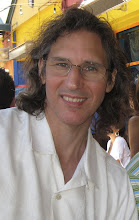
It's time to announce a new web page is up at my website 13thmass.org. This page covers the period in the regiments' history from June, 1862, through August 9, and the battle of Cedar Mountain.
Here is the link: http://13thmass.org/1862/pope.html
President Lincoln created the Army of Virginia in late June, and placed Major- General John Pope in command. The 13th Mass. Vols., served in Hartsuff's Brigade, Rickett's Division, McDowell's Corps, within the structure of this new force.
It is interesting that I found the following quote in one of the first letters I posted, given by a contraband, (taken in by members of the 13th Mass Band):
"Taint always de man that makes the most talk dat gots da most sense."It seemed a fitting description of General Pope himself, although given in answer to a question on a totally un-related subject. I placed the quote at the top of the page.
To set the stage for these 'history' pages I write brief introductions outlining the political climate in Washington, or other significant events happening in the war effort. To do this I turn to books and informational websites. I've also had to learn about engagements I previously knew little about, such as Port Republic, Cross Keys, and Cedar Mtn. I try to write brief accurate summaries of these events to add a little depth to what went on around the 13th Mass. For this page, I'm re-reading John J. Hennessy's "Return To Bull Run." For information about the Battle of Cedar Mountain, I turned to Robert K. Krick's "Stonewall Jackson at Cedar Mountain." I also frequently look to James I. Robertson, jr.'s "Stonewall Jackson." All of these are excellent resources and its a pleasure to read them.
Beginning with Cedar Mountain, things really began to get hot for the regiment, in terms of seeing some real action. Its a challenge to summarize it briefly and accurately. Hopefully I got it right.
There is a long article by Charles E. Davis, Jr. on the page, which I have titled, "Shelter Tents." It's one of my favorites. In the article Davis describes some of his tent-mates in detail, and the various fates they met. It culminates with an incident involving General George L. Hartsuff, and one of his staff officers, "Brown," that the boys didn't care for too much. Its a great look into the character of the soldiers in the regiment. I am also fortunate to have photos of all the boys mentioned in the reminiscence.
As usual, I've added a few somewhat humorous graphics to illustrate the text. The technical aspects of building this site are a challenge to me at times. Browsers don't act alike, and pages or images become distorted, as much as I try to prevent it. Currently, I'm building the pages to have a somewhat 'fluid' layout, which will expand or contract with the visitors browser window size. My screen resolution is set to 1280 x 1024 and the pages look beautiful, although they are designed to hold up with smaller screen sizes. I've heard they hold up well in IE-8. I prefer viewing the pages on a full screen monitor at max-width, or with a sidebar opened on the left side of the screen. I may switch to a fixed width page layout to prevent the distortions I occasionally experience. I appreciate feedback on the website, whether technical in nature, or regarding content.


